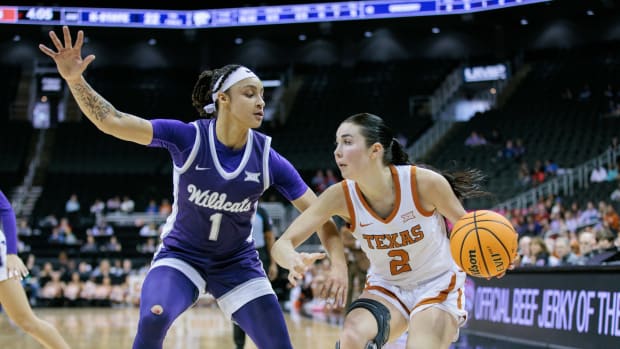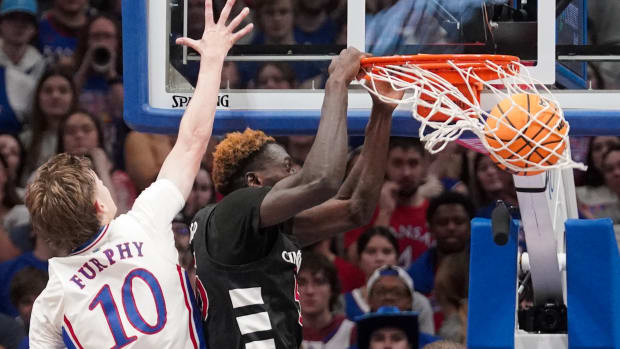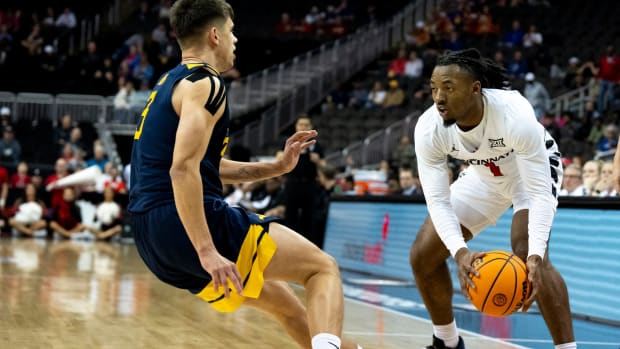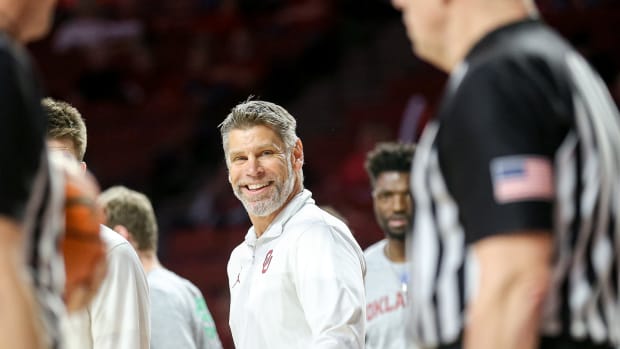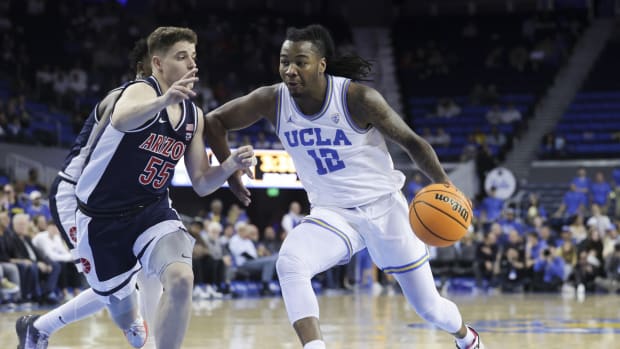Can Evans, Washington, Cumberland lift Cincinnati into the nation's elite?
The college basketball off-season is long and largely lacking in major news developments. Programs are still finalizing their 2017 recruiting classes and sorting out which of their players will return for another season or jump to the professional ranks. We’ve got a long way to go until Midnight Madness. To help pass the time, SI.com is asking and answering three key questions about each of the teams in our Way-Too-Early Top 25. Here’s No. 14, Cincinnati.
1. Will Jacob Evans or Kyle Washington become household names?
Because both are pretty good with room to be better. Evans’ raw numbers (13.6 points, 4.1 rebounds, 2.7 assists per game) aren’t outrageous, but that might be more a product of tempo than anything else. The 6’6” forward shot 41.8% from three-point range as a sophomore and averaged 1.064 points per possession in all scenarios, per Synergy Sports, ranking in the 92nd percentile nationally. He might not create highly efficient off the bounce—Synergy rates him “below average” in isolation and pick-and-roll ball handler scenarios—but when you average 1.159 points per possession on spot-ups, good for the 88th percentile nationally, it might not matter. Evans’s offensive rating of 126.6 ranked second among Bearcats last season.
The 6’9” Washington has an intriguing inside-outside repertoire and was by some measures the most productive offensive player Cincinnati deployed last winter. He averaged a double-double (20.9 points, 10.8 rebounds) on a per-40 minute basis and shot 51% from the floor. Still, his offensive rating (113.5) ranked sixth among rotation players even though he was the highest-volume shooter (16.2 attempts per 40 minutes) in the rotation.
The best news for Cincinnati might be that its top two returning offensive outlets haven’t peaked, despite having a great deal of experience between them. To leap into the nation’s elite and contend for an AAC title with newly added Wichita State, the Bearcats likely need one or both to become a nationally known quantity in 2017-18.
Will Press Virginia have a postseason breakthrough?
2. Is Jarron Cumberland a breakthrough player candidate?
The former four-star recruit should make a significant sophomore jump. He shot 49.3% as a reserve during his freshman campaign—including an eye-grabbing 64.9% on two-point attempts, which led all Cincinnati players—and extracted a great deal out of the court time allocated to him. On a per-40 minute basis, the 6’5” guard produced 17.5 points, the second-best rate among the Bearcats’ rotation players. His overall offensive rating (121.8) ranked third on the team.
The addition of transfer guard Cane Broome (see below) may mean that Cumberland does not assume a massive offensive burden as a sophomore. And he’ll have to be a more efficient option in half-court settings; per Synergy Sports, transition opportunities accounted for 26.9% of Cumberland’s possessions, and his 1.311 points per possession in those scenarios rated in the 88th percentile nationally. He was solid but unspectacular in spot-up possession (0.935 PPP, 55th percentile) and isolation (0.909 PPP, 73rd percentile). Cumberland seemingly has work to do in order to be better against set defenses. This is not surprising in any standard freshman-to-sophomore progression, and Cumberland appears equipped to smooth out the rough patches over the summer.
3. Will Cane Broome amplify the Bearcats’ offense?
First, and perhaps more importantly, will he lead the nation in horrible puns generated? I’m already imagining Bill Raftery calling a Cincinnati game, sizing up a nifty move from the 6’0” transfer guard and declaring it “A little Cane sugar!”
As for how the former Sacred Heart star affects the actual basketball product: Pretty well, presumably. Mick Cronin has consulted with Notre Dame coach Mike Brey on how to create a more free-flowing, egalitarian offense to complement the browbeating defense he expects to deploy nightly. That resulted in the nation’s 34th most efficient attack in 2016-17, per kenpom.com.
Broome, meanwhile, ranked seventh in the nation with 23.1 points per game in 2015-16 before the transfer to Cincinnati. While unlikely to come anywhere near matching that production next winter, Broome should step into an offense that values sharing the ball and finding open shooters. And replacing the production of the graduated Troy Caupain (10.5 points per game and 39.6% shooting overall) isn’t a big ask. Broome should do better and, in doing so, might sweep Bearcats fans off their feet. (Sorry not sorry. You’re in for this all season. Deal with it.)
